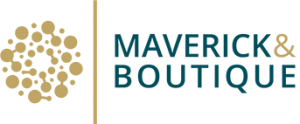The challenge in today’s workplace is to be increasingly more efficient, effective, and above all creative in our work. To rise to this challenge, we must be able to focus our attention and devote our time to the tasks that matter most, whether that be preparing for a sales presentation or writing a report for stakeholders.
In our hyper-connected world, this means not only escaping from interruptions in the physical world, but the endless barrage of alerts coming from our computers and mobile devices. Setting up boundaries, both physical and digital, leaves open the necessary mental bandwidth and the freedom to pursue our creative endeavors.
Below are a few tips for setting boundaries in the workplace and creating the space to focus on the most important tasks in front of you:
- Make it known when you need to focus with no distractions:
- Announce it at a staff meeting in advance
- Block out time on your public calendar (“unavailable”)
- Use a “do not disturb” sign on your office door or cubicle
- Ask colleagues to hold phone calls and visitors
- Turn-off alerts and mute all devices
- If a colleague or visitor “drops in” for an unexpected, off-topic conversation, greet them politely, as you do not want to discourage “face-to-face” interactions, “open door” policies, or the free flow and exchange of ideas. However, it is imperative that you are direct and upfront that in the moment, you must focus your energy on something else. Invite them to return or schedule time on the calendar for that chat.
- The office can be a never-ending flurry of activity. Collective anxiety can rise in periods of tight deadlines, budgeting periods, or tumultuous current events. Our colleagues, both peers and supervisors, will find ample opportunity to infringe on our time and attention. All of this can take away our focus and drain our creative energy.
If you find this describes your workplace, you may want to find an alternative space, that provides you a needed escape and relief from the daily “busy-ness” around the office. This could include:
- Unused meeting, conference, or breakout room
- Library
- Cafeteria or offsite coffee shop
- Work from home
Whatever space you use should conform to established organization polices and be most conducive to how you work. Some people like absolute silence, while others thrive in a busy space full of white noise. Working from home has its own set of benefits and challenges for getting things done. Be thoughtful with whatever you chose.
- Be strategic and intentional with your calendar. It is said that “time is a finite resource that we will never get back.”
Do not overbook yourself and make sure that your calendar is being used most effectively to support your goals. This includes how you spend your lunch time, scheduled breaks, or those precious free moments. Sometimes the most “efficient” or expedient ways to spend our time are not the most fruitful. Quite often, we fail to leave critical space for reflection or informal engagements with others.Former Secretary of Defense and Marine Corps General, Jim Mattis, in his new book Call Sign Chaos, offers a kernel of wisdom on this subject from his 40 plus year career in national defense:… lack of time to reflect is the single biggest deficiency in senior decision-makers. If there was one area where I consistently fell short, that was it. Try as I would, I failed to put aside hours for sequestering myself outside the daily routine to think more broadly: What weren’t we doing that needed to be done? Where was our strategy lacking? What lay over the horizon? … a leader must try to see the overarching pattern, fitting details into the larger situation.
- Find a personal “battle rhythm” that allows you to get things done creatively, separate from the needs and priorities of others and away from endless distractions.
Some of us work best in the early morning hours, while others prefer to work late into the night. Sometimes arriving just 15 minutes early, before everyone else filters in, can help us set our priorities and jump into a creative flow. Whatever it is that works best for you, find and stick to it!
Knowing that we all work differently, managers and leaders in organizations may want to examine workplace policies to make allowances for flexible working hours and locations, even if just temporary to help a team get through a project or trying period.
This article is the first in a series on how to most effectively manage our time and attention for the work that matters most. Subsequent articles will look at technology and how we interact together in organizations. Check back next week for more!


